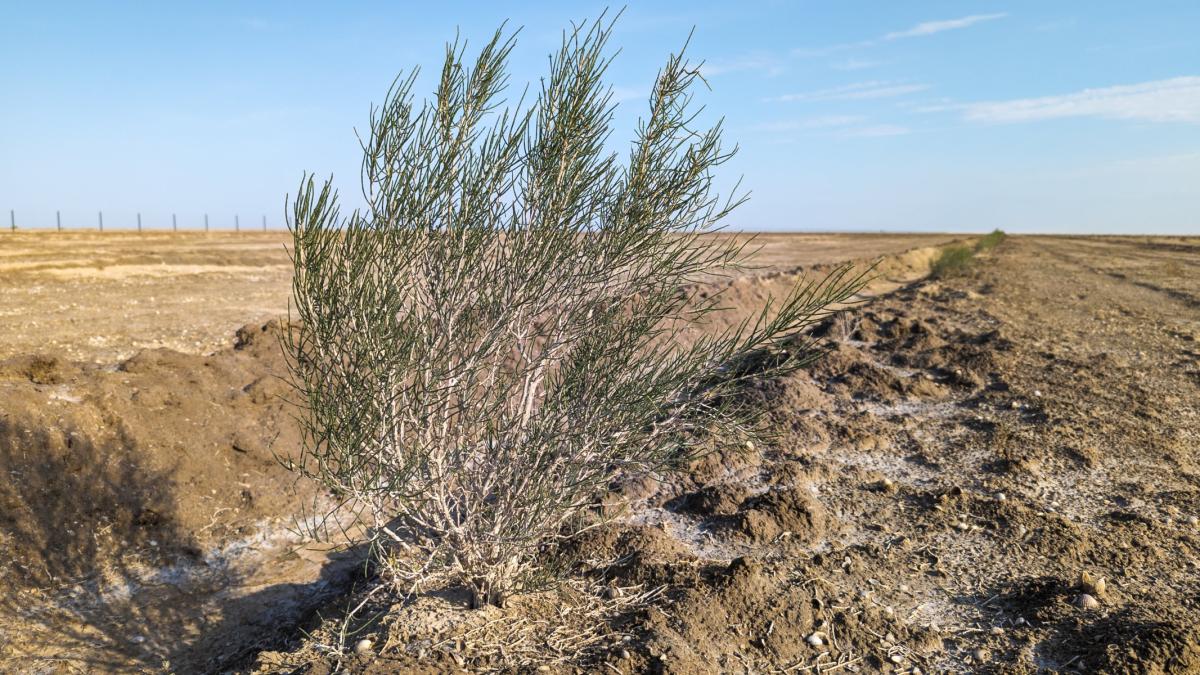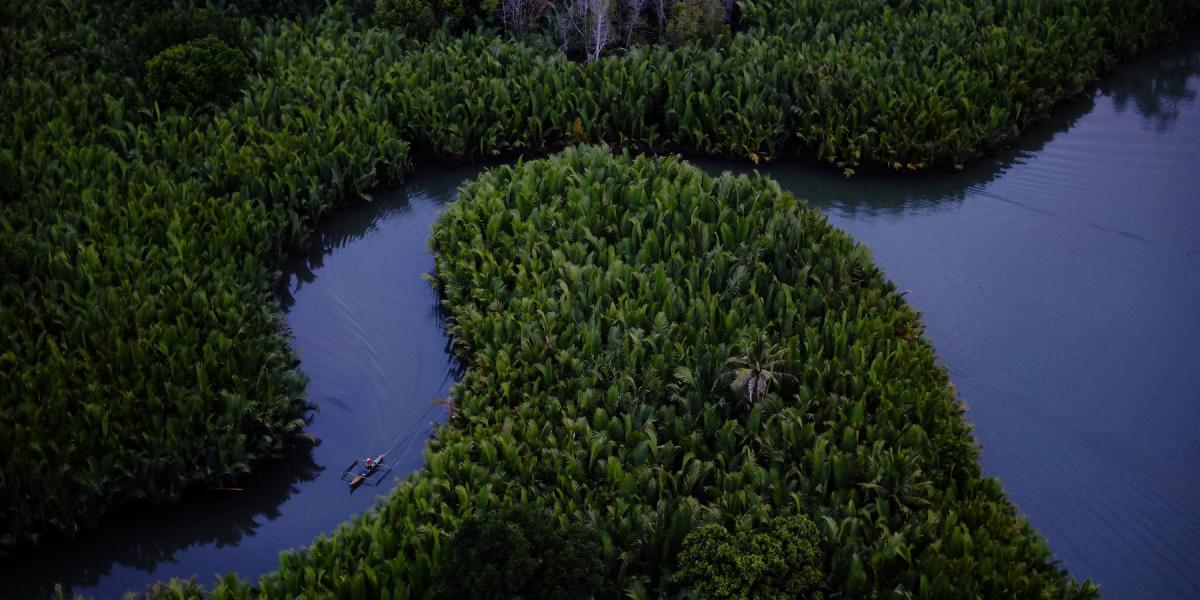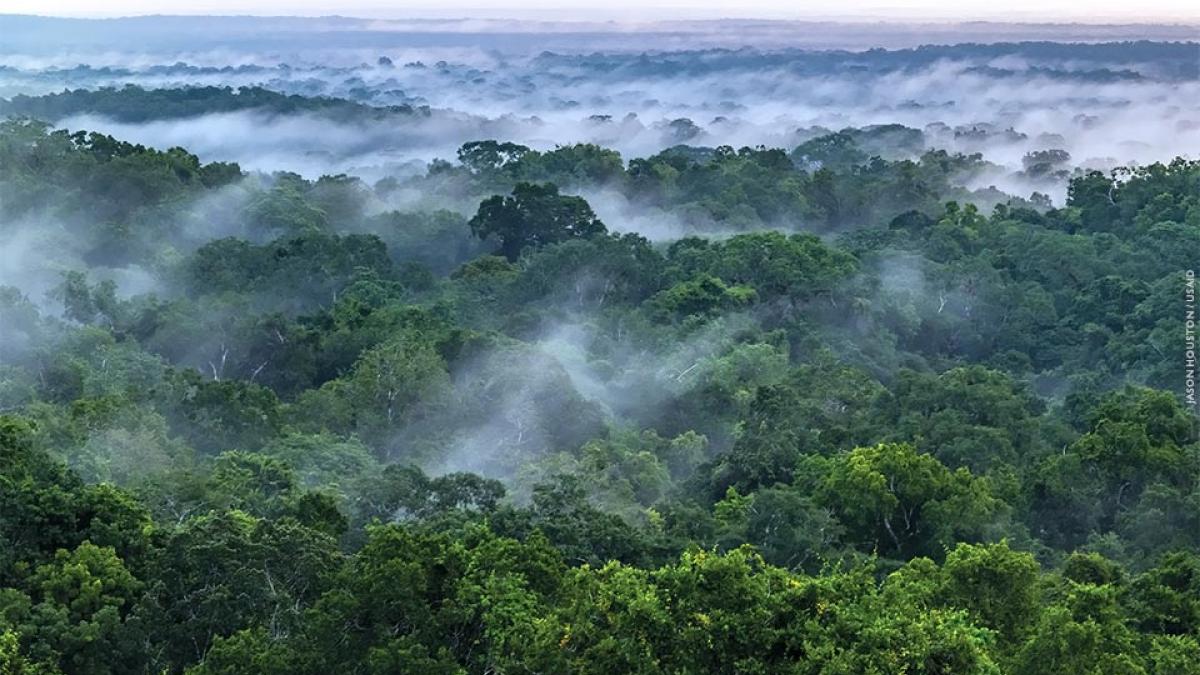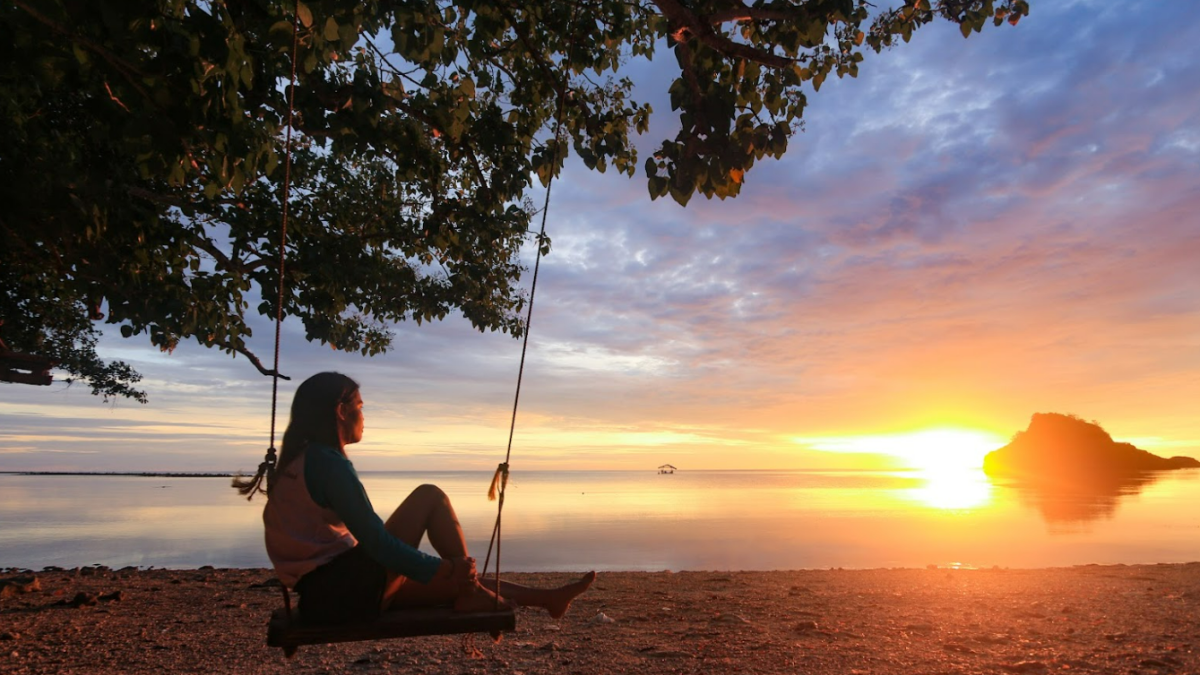Story by Jessica Bach, Advancing Capacity for the Environment Program

Our shared planet is our home and most valuable resource. Around the world, healthy forests and ecosystems provide food, jobs, clean water, and are a buffer against storm surges and landslides while storing carbon.
However, more than half the world’s tropical forests have been destroyed since the 1960s, and we continue to lose global tropical forests at a rate of 10 million hectares a year—an area nearly the size of the U.S. state of Virginia.
That’s why USAID and our partners are working to conserve, restore, and better manage forests and other lands. USAID works with communities, businesses, and governments across entire landscapes to have impact at scale. We do this by mobilizing financial resources to support conservation, improving laws and governance, building institutional capacity, making information accessible, advancing equity, and supporting improved landscape management and planning.
By investing in forest conservation and restoration, USAID is helping build a sustainable and resilient future for people and nature.
Explore some of our work to conserve, restore, and better manage forests and lands around the world:



Mobilizing Financial Resources to Support Conservation in Cambodia
The Keo Seima Wildlife Sanctuary in eastern Cambodia’s Mondulkiri Province is home to a rich variety of wildlife and ecosystems like the giant ibis, yellow-cheeked gibbon, black-shanked douc, the iconic Asian elephant, as well as being the ancestral and contemporary home of the indigenous Bunong People.
Despite its status as a protected area, the Sanctuary’s forests have been degraded or deforested as a result of illegal land clearing and logging—releasing greenhouse gasses into the atmosphere and causing detrimental effects to wildlife and local communities that rely on these forests.
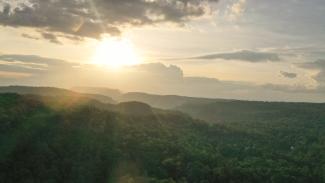
USAID, the Royal Government of Cambodia, and the Wildlife Conservation Society work to reverse these troubling trends by financing the preservation of over half of the Keo Seima Wildlife Sanctuary through the sale of carbon credits.
As of 2023, this partnership has reduced 21 million tons of CO2 equivalents, prevented over 25,000 hectares of deforestation, protected 85 globally threatened species, provided 2,200 people with access to clean water, improved livelihoods for upwards of 13,000 people, and provided over $1.1 million in direct cash payment to communities.
The sales of carbon credits from Keo Seima now sustainably fund activities for ten communities living around the wildlife sanctuary.

In June 2023, USAID worked with government officials, local authorities, communities, and Indigenous Peoples to plant over 26,600 seedlings on 21 hectares of land and educate local communities living in and around the Sanctuary on how they can benefit from conservation.
Throughout the country, USAID has helped improve the management of natural resources for more than three million hectares of forest since 2019—removing more than 31 million metric tons of greenhouse gas emissions from the atmosphere.
Improving Laws and Governance in the Philippines
Across the approximately 2,000 habitable islands of the Philippines, millions of people rely on agriculture, forestry, and fisheries for their livelihoods. However, these critical natural resources are increasingly threatened by frequent natural disasters, unsustainable management, and rapid urbanization.
USAID works with the Philippine government and local communities to improve natural resource governance and reduce environmental crimes.
In southern Palawan, Philippines, USAID conducted a comprehensive ecological assessment to determine the status of species, habitats, and threats in the Mt. Mantalingahan Protected Landscape.
As part of the assessment, field researchers recorded the measurements of a towering manggis tree to assess its volume, growth and carbon storage over time. Together with neighboring trees in old-growth forests, these trees play a crucial role in sequestering carbon.
USAID works with local partners in the landscape to update their protected area management plans and craft better-informed programs and policy decisions to better conserve forests.
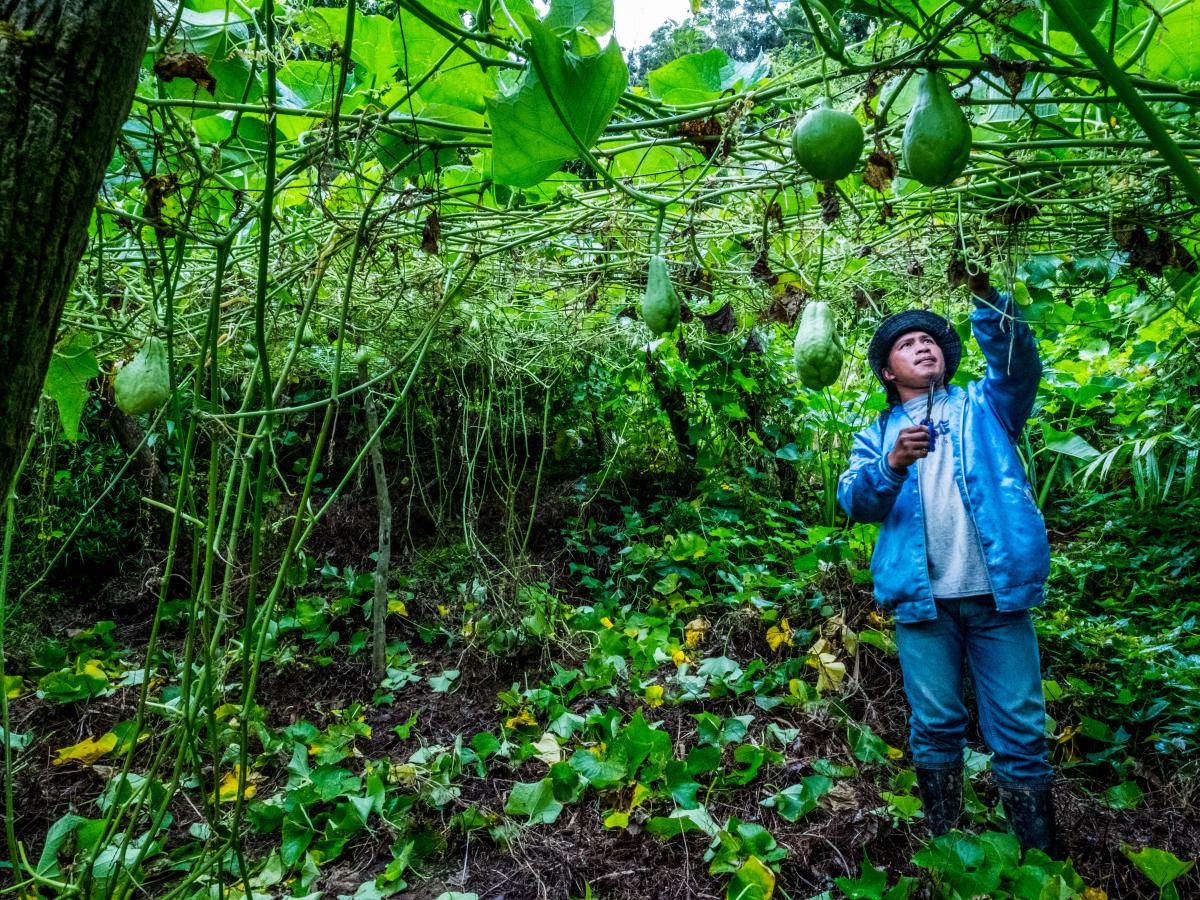
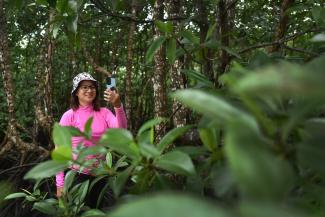
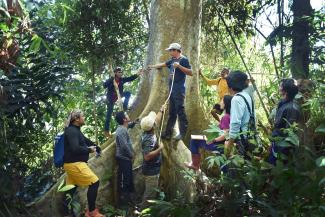
Making Information Accessible in the Democratic Republic of Congo
The Democratic Republic of the Congo (DRC) contains 60 percent of the Congo Basin, the world’s second-largest tropical forest. But the rate of deforestation in the Congo Basin has doubled in recent years, causing devastating impacts for the 80 million people who rely on it for food, shelter, and livelihoods.
Through SilvaCarbon—a U.S. whole-of-government program to improve forest inventories, monitoring, reporting, and verification—USAID is working with governments in the DRC to improve forest management through the design and implementation of a national forest monitoring system.
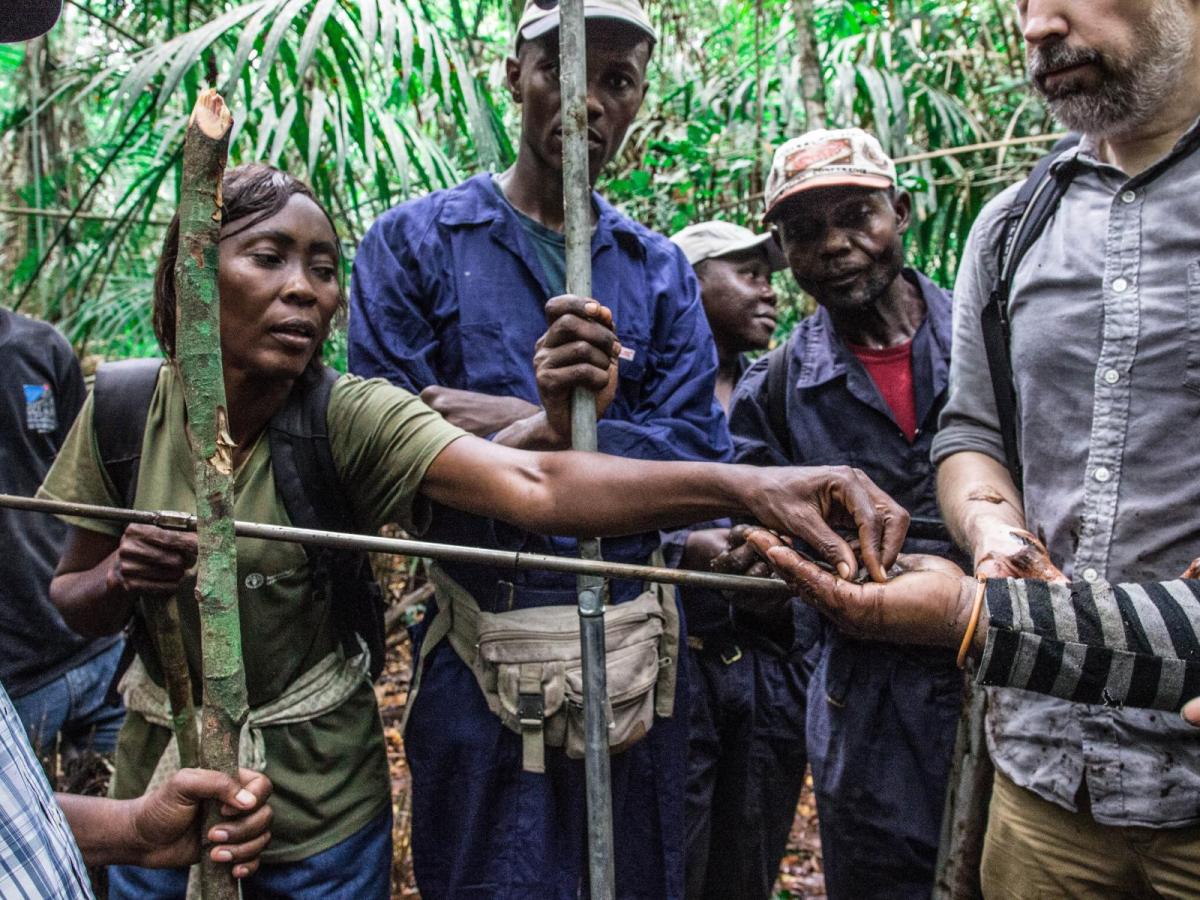
This includes tracking changes in forest and land cover using remote sensing data, estimating soil carbon in peatland forests, and calculating terrestrial greenhouse gas emissions. Training from USAID, in partnership with the U.S. Forest Service, allows technicians to adopt new cost-effective technologies and approaches, strengthen their technical capabilities and expertise, and exchange lessons and best practices from around the world.
Accurate, transparent, and timely forest resource information is essential for making sound decisions related to land use planning.
Over the last five years, USAID has reduced, sequestered, or avoided the emission of 53 million tons of greenhouse gasses and improved the management of over 17.1 million hectares of biologically sensitive forests in the DRC.

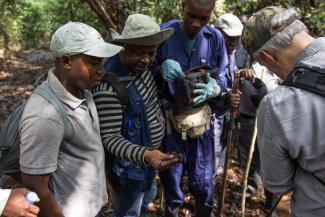
Advancing Rights and Equity in Colombia
Colombia is the second most biodiverse country on earth, with over 50 percent of its territory covered by natural forests. However, land appropriation, agricultural expansion, illegal logging, and wildfires are contributing to the deforestation and degradation of its forest ecosystems—threatening the health and stability of the country’s natural resources and communities.
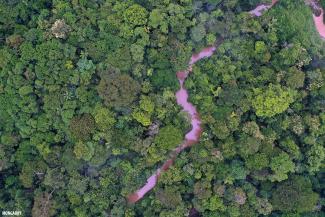
USAID is working to change that. Under the Colombia Forests and Wetlands Activity, USAID and the United States Forest Service are strengthening the organizational capacity of partner agencies by training male and female firefighters in fire management, improving policies and strategic planning, and ensuring the effective use of science and technology.
The program supports women’s leadership and skill-building opportunities.
Magda is one of the 3,100 female firefighters who have benefited from the program and now helps Colombia fight wildfires.

Building Institutional Capacity in West Africa
The conservation and restoration of West Africa’s forests and wildlife are crucial to maintain the region’s biological heritage for future generations, meet global emissions reduction targets, help protect communities from extreme weather.
Across the region, USAID works with partners to strengthen the capacity of national and regional governments and institutions to improve forest conservation, reduce greenhouse gas emissions, and increase carbon sequestration.
This includes training eco-guards to help manage and conserve critical carbon sink ecosystems like forests and wetlands. Eco-guards patrol forests to prevent illegal logging, poaching, and habitat destruction, and engage with local communities to promote sustainable practices.
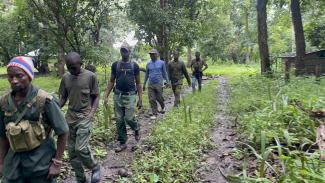

The use of camera traps provides real-time data on biodiversity shifts and ecosystem dynamics, enabling scientists and local governments to strengthen their strategies and policies for the protection and management of vulnerable ecosystems.
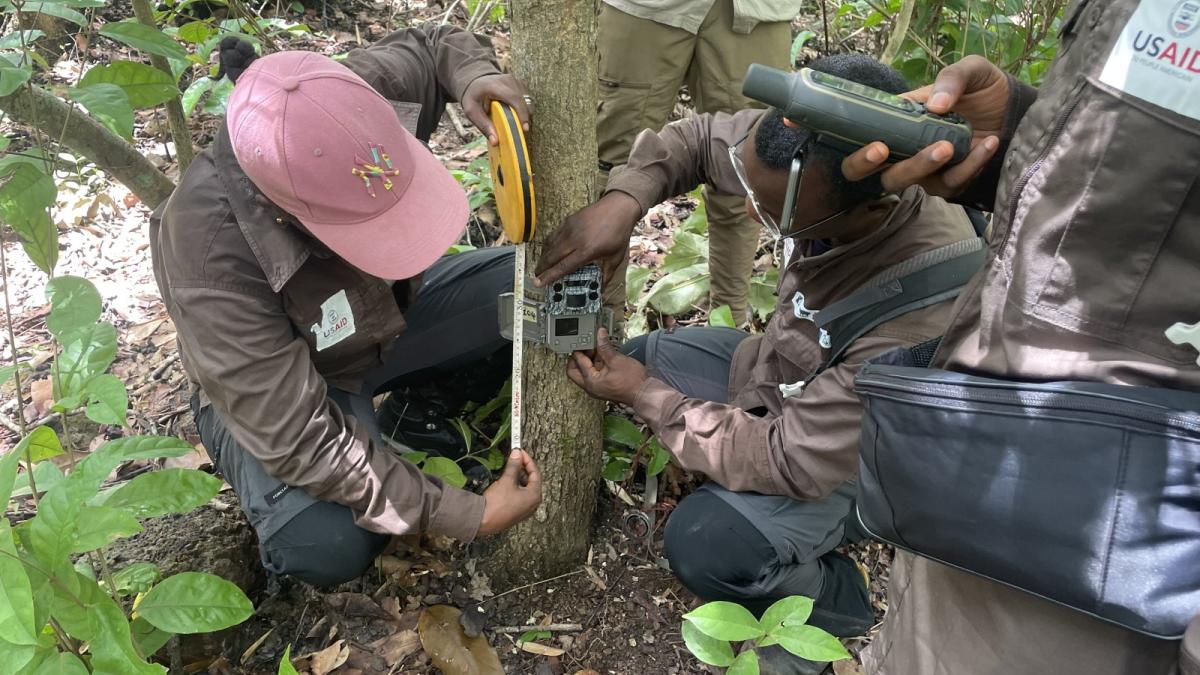
Improving Landscape Planning and Management in Kazakhstan
The Aral Sea tragedy is one of the world’s most infamous environmental disasters. Once the fourth-largest lake in the world, by 1997, the sea had shrunk to 10% of its original size after the rivers that fed it were diverted for irrigation. This region is now known as the Aralkum Desert, the world’s newest desert. An overwhelming majority of the dry sea bottom is heavily salinized and polluted with legacy agriculture runoff.
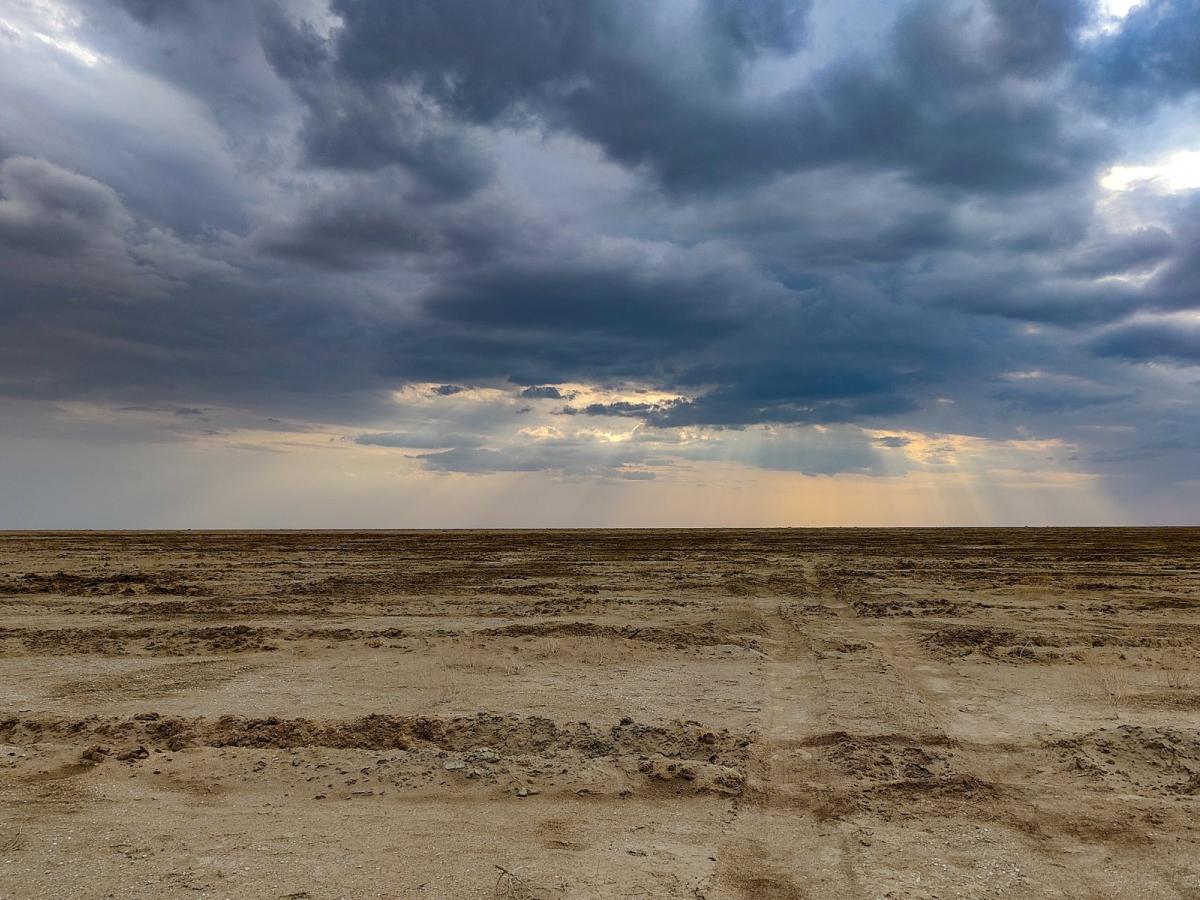
In close partnership with the Government of Kazakhstan and local state bodies, USAID works to improve the resilience of landscapes in the region. USAID strengthens ecosystem restoration, facilitates regional transboundary cooperation, helping scale up and replicate results for local communities and governments of the region.
By creating an oasis using black saxaul, USAID’s partnerships are fostering a stable ecological system with native species of flora and fauna. Furrows were created to collect clean sand and trap additional moisture, which in turn will create a suitable environment for saxaul and other shrub seeds to take root and grow.
As of March 2023, the activity has planted approximately 200,000 black saxaul seedlings.

